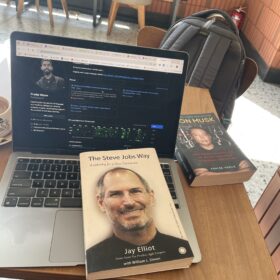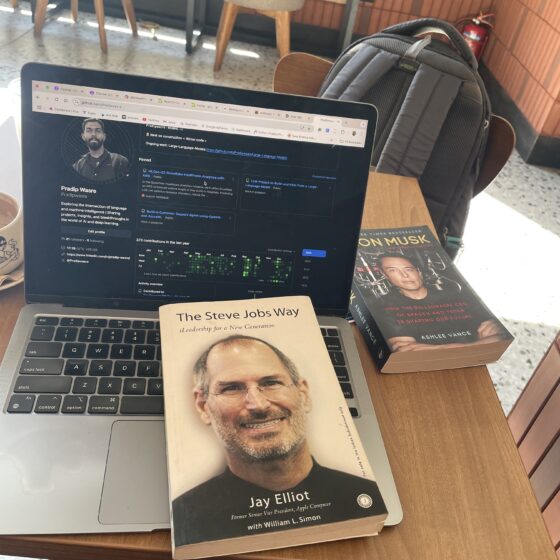Day 5: Building AI-Powered Marketing Brochures with OpenAI API
In the fifth day of our journey, we embarked on an exciting project: creating AI-powered marketing brochures for companies using OpenAI’s API and Python. This practical application of LLMs demonstrates how these tools can be leveraged to solve real-world business challenges, specifically in marketing, recruitment, and investor outreach. Let’s dive into the key concepts, functionalities, and the LLM techniques used in this project.
The Goal of the Project
The primary objective of this project was to create a product that generates polished marketing brochures for companies. These brochures are tailored for different audiences, including:
- Prospective Clients – Highlighting the company’s offerings and value propositions.
- Investors – Focusing on the company’s growth potential, vision, and achievements.
- Recruitment – Showcasing the company culture, career opportunities, and values.
By automating this process, businesses can save time, ensure consistency, and produce high-quality materials for their target audience.
Technologies and Tools
- OpenAI API: This was used to access the GPT model to generate content, extract relevant links, and synthesize information from company websites.
- Python: The programming language used to integrate web scraping, API calls, and text processing.
- JupyterLab: The environment in which the project was developed, allowing for seamless integration of code, results, and explanations.
How the Project Works
The project involves two major steps: collecting relevant company information and generating the marketing brochure.
Step 1: Collecting Relevant Information
We needed to gather data from the company’s website, such as:
- Landing Page Content: The main text and structure of the homepage.
- Key Links: Pages like “About Us,” “Careers,” and “Contact Us” that are most relevant to brochure creation.
This required web scraping and filtering links intelligently. Here’s how we achieved it:
- Web Scraping: A function was built to scrape the content and links from a given website URL. Irrelevant elements like images, scripts, and styles were removed, leaving clean textual data.
- Link Analysis with One-Shot Prompting: A “one-shot” prompt was provided to the LLM. This prompt included instructions on how to identify relevant links and convert relative URLs (e.g.,
/about) into absolute URLs (e.g.,https://company.com/about). The prompt was structured as:- System Role: Provided detailed instructions on how to process the links.
- User Role: Supplied the raw links from the webpage.
- Desired Output: JSON format with categorized links, such as “About Page” or “Careers Page.”
One-shot prompting proved highly effective in guiding the LLM to generate structured and precise outputs.
Step 2: Generating the Brochure
Once the relevant content was extracted, the next step was to synthesize it into a coherent and engaging marketing brochure. Here’s how we structured this part of the project:
- Content Aggregation: The system combined the main webpage content with text from the relevant links. This provided a comprehensive view of the company.
- Brochure Creation Prompt:
- The LLM was provided with a system prompt explaining its role: “You are creating a professional marketing brochure based on the provided company information.”
- The user prompt supplied the aggregated content and specified the target audience (e.g., investors, clients, or recruits).
- Markdown Formatting: The output was designed to be well-structured with headings, bullet points, and rich text to ensure readability.
The Role of LLM Concepts
Several advanced LLM concepts were utilized in this project to achieve optimal results:
1. One-Shot Prompting
One-shot prompting involves providing a single example of the desired output in the prompt itself. This technique was used to guide the LLM in identifying relevant links on a company’s website. For example, the prompt explicitly showed how to categorize links and respond in JSON format. This ensured consistent and accurate outputs.
2. Structured Outputs
The LLM was instructed to generate outputs in a structured JSON format. This approach is essential for tasks requiring organization and categorization, such as identifying “About Us” and “Careers” pages. By defining a clear structure in the prompt, the model produced outputs that could be easily parsed and utilized programmatically.
3. Context Window
The context window played a crucial role in ensuring the model could consider all the information provided (e.g., website content, extracted links) while generating the brochure. This demonstrated the importance of managing token limits in projects that require processing large amounts of data.
4. Streaming Outputs
To enhance user experience, the project implemented streaming responses. This feature displayed results incrementally, creating a “typewriter effect.” It made the process interactive and allowed users to see the brochure being generated in real time.
Creative Prompt Design
Prompt design was a cornerstone of this project. The quality of the generated content depended heavily on how the prompts were framed. Here are some best practices for creative prompt design used in this project:
- Be Explicit: Clearly define the role of the model (e.g., “You are a professional brochure designer”).
- Provide Context: Supply all relevant information, such as company details and target audience.
- Use Examples: When expecting structured outputs, include a sample response in the prompt.
- Iterate: Experiment with different prompt formulations to refine the quality of outputs.
Key Functions and Their Role
Here’s an overview of the main functions used in the project and how they contributed to the end goal:
- Website Class: A utility for web scraping. It handled fetching webpage content, cleaning irrelevant elements, and extracting links.
- get_links(): This function used the LLM to analyze links and identify the ones most relevant for brochure creation.
- get_all_details(): Aggregated the main page content and relevant links into a single dataset.
- create_brochure(): Called the LLM to synthesize all the data into a well-formatted marketing brochure.
- stream_brochure(): Enhanced user experience by streaming the generated brochure content in real time.
Practical Applications
This project demonstrates the real-world applicability of LLMs in marketing and business solutions. Companies can use such a tool to:
- Quickly produce high-quality marketing materials.
- Automate the synthesis of website content for various audiences.
- Save resources while maintaining professional standards.
Takeaways
- LLMs as Business Tools: This project highlights the versatility of LLMs in solving business challenges.
- Prompt Engineering: Crafting clear and specific prompts is key to unlocking the full potential of LLMs.
- Structured Outputs: By requesting structured outputs like JSON, you can ensure the generated content is easy to process and integrate.
- Streaming Responses: Enhancing user experience with streaming outputs adds an interactive dimension to LLM applications.
By combining the power of OpenAI’s API, Python, and advanced LLM techniques, we created a robust solution for generating AI-powered marketing brochures. This project not only demonstrates the capabilities of LLMs but also underscores their potential to revolutionize business operations.

